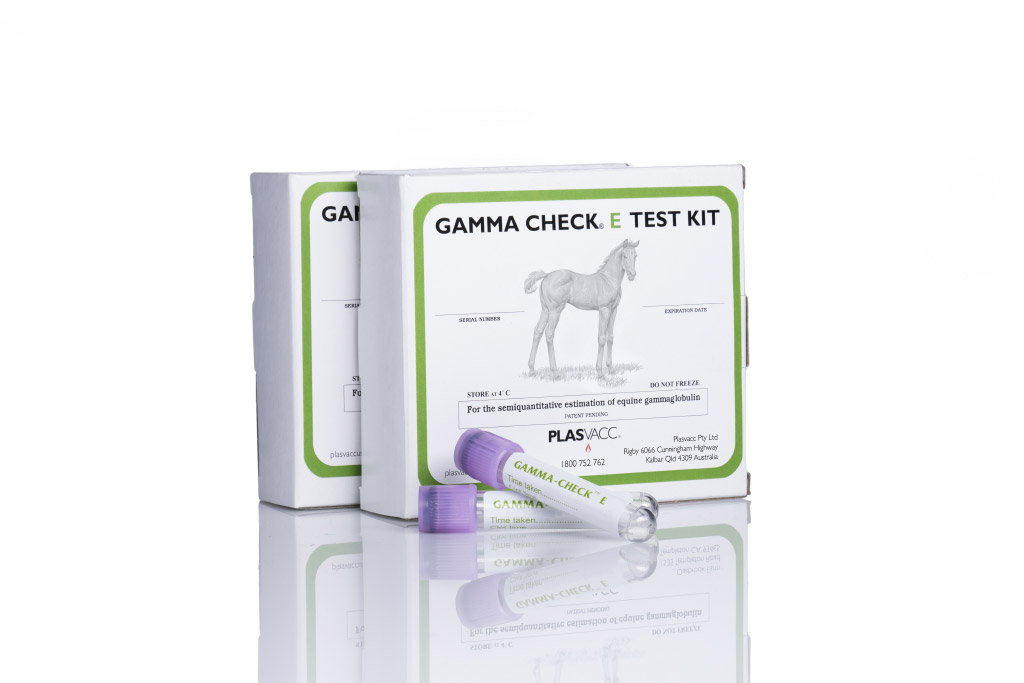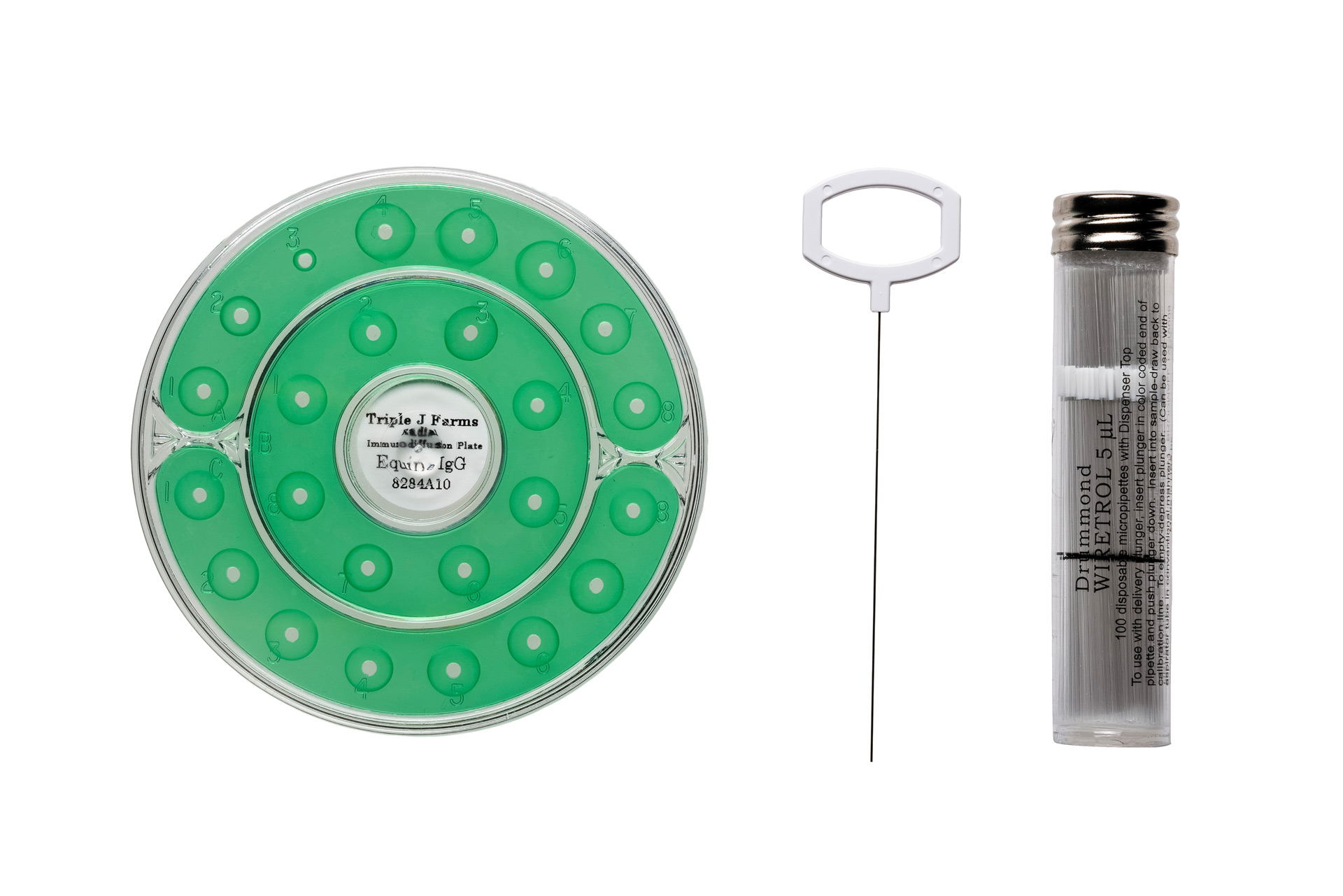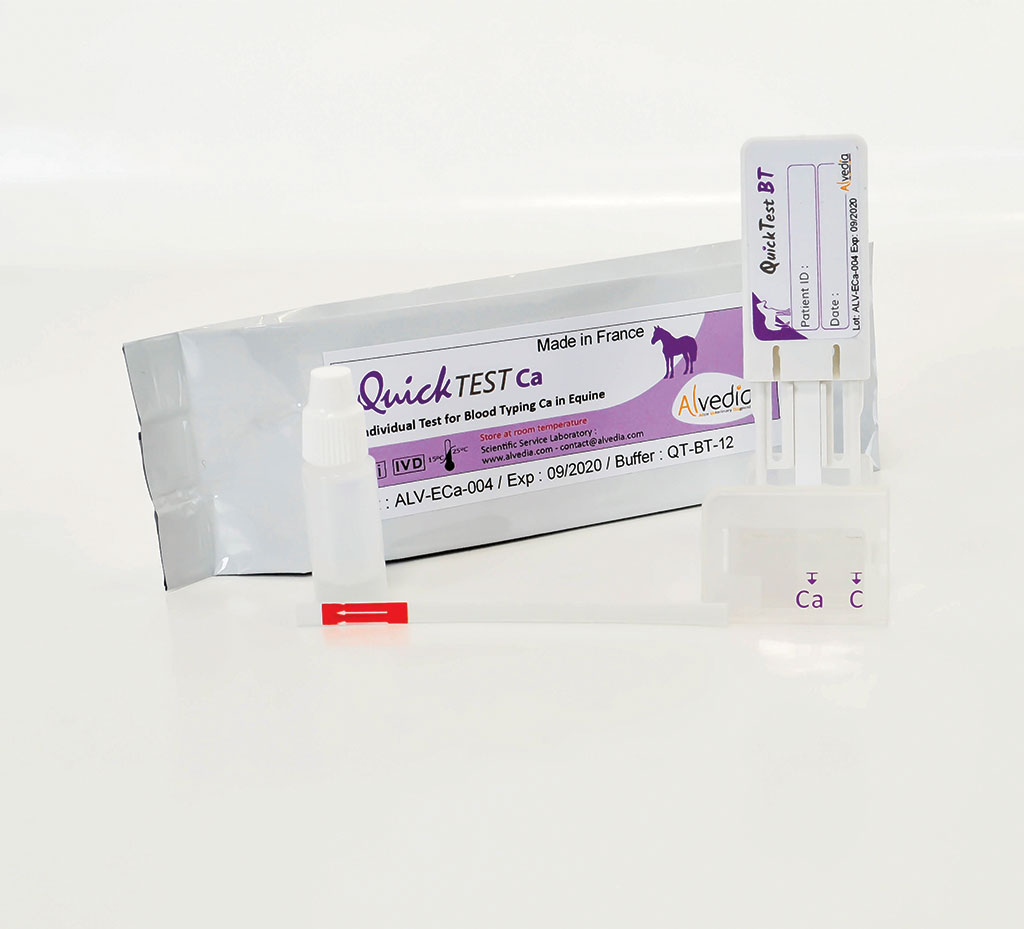Diagnostic Kits

Gamma Check E
The Gamma Check E test is designed to be a rapid screening test for foals, using whole blood or serum. It was developed as a semi-quantitative means of measuring the foal’s IgG level. This test offers results within 5 minutes and can be done “mare side”. No special equipment is needed and the test can be run as early as 8 hours post-foaling allowing time for oral colostrum supplementation. A positive result indicates that the IgG level is greater or equal to 800 mg/dl.
CAUTION: False positive results are occasionally seen when samples are haemolysed or when a foal has a high fibrinogen level. If the foal is not healthy, we do not recommend using the test. As false negatives do occasionally occur, we do not recommend transfusing a foal with plasma based only on the results of the Gamma Check E test. If the foal tests negative, we suggest repeating the test using the Foal RID test for quantitative results.

Equine RID
Single radial immunodiffusion tests are an accurate, quantitative means for measuring proteins in serum and other fluids. The Equine RID test has been developed to allow you to measure equine IgG easily, economically, and quickly. Serum is placed into wells in a radial immunodiffusion plate where it diffuses out into agar on the plate. This agar contains antibodies to the IgG in equine serum. After a few hours, because of antibody reacting with the IgG antigen, visible precipitation rings form in the agar. The diameter of these rings is related to the IgG concentration in the serum placed into the well. Using serum reference standards of known IgG concentration, the concentration of the IgG in a test serum can then be easily determined.
Each kit is comprised of: A) a radial immunodiffusion 24-well plate containing agar gel with antiserum to equine IgG dissolved in it, B) three equine reference sera of known IgG levels, C) graph paper with a measuring scale and instructions.

Quick Test Blood Typing – Equine Ca
The determination of blood type is an essential process that ensures animals will benefit from transfusion support. Nowadays, a dog or a cat has a significant probability of being transfused once or more in their lifetime. Basic blood typing is essential to perform these first and subsequent transfusions as safely as possible and also to make the best use of the donated blood.
- 2-minute procedure.
- All material included.
- Archivable.
- Easy handling.
- Reliable results.
- Easy interpretation.
- High specificity.
- Fast result.
Alvedia’s technology
The system is based on the migration of red blood cells on a membrane. Monoclonal antibodies specific to each antigen (DEA 1 in dogs, A/B in cats, A/O in pigs and Ca in horses) have been incorporated on the membrane. These antibodies will retain positive antigens (DEA 1 in dogs, A/B in cats, A in pigs and Ca in horses). A positive result is characterized by the presence of 1 or 2 red lines in front of the A and/or B for the feline QuickTest or a red line in front of DEA 1 for the canine QuickTest. A positive result is characterized by the presence of a red line in front of the Ca line for the equine QuickTest. The control line (C) must be positive; this signifies that the test has run successfully.
In horses, there are 7 main blood group systems (A,C,D,K,P,Q,U) with greater than 30 red blood cell factors. Of these, Ca seems to be one of the most immunogenic (causing allo-immunization) antigens.

